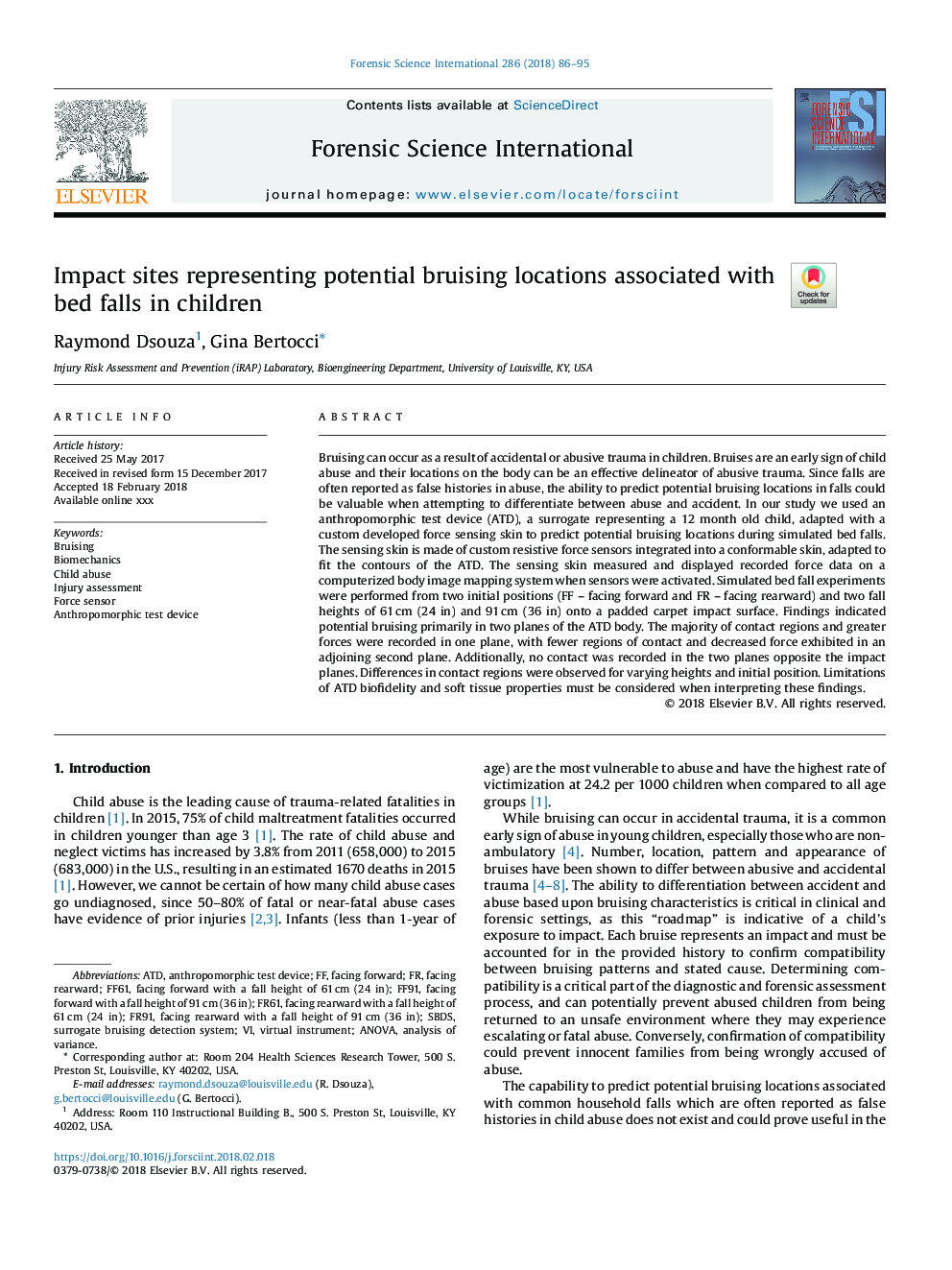| Article ID | Journal | Published Year | Pages | File Type |
|---|---|---|---|---|
| 6551106 | Forensic Science International | 2018 | 10 Pages |
Abstract
Bruising can occur as a result of accidental or abusive trauma in children. Bruises are an early sign of child abuse and their locations on the body can be an effective delineator of abusive trauma. Since falls are often reported as false histories in abuse, the ability to predict potential bruising locations in falls could be valuable when attempting to differentiate between abuse and accident. In our study we used an anthropomorphic test device (ATD), a surrogate representing a 12 month old child, adapted with a custom developed force sensing skin to predict potential bruising locations during simulated bed falls. The sensing skin is made of custom resistive force sensors integrated into a conformable skin, adapted to fit the contours of the ATD. The sensing skin measured and displayed recorded force data on a computerized body image mapping system when sensors were activated. Simulated bed fall experiments were performed from two initial positions (FF - facing forward and FR - facing rearward) and two fall heights of 61Â cm (24 in) and 91Â cm (36 in) onto a padded carpet impact surface. Findings indicated potential bruising primarily in two planes of the ATD body. The majority of contact regions and greater forces were recorded in one plane, with fewer regions of contact and decreased force exhibited in an adjoining second plane. Additionally, no contact was recorded in the two planes opposite the impact planes. Differences in contact regions were observed for varying heights and initial position. Limitations of ATD biofidelity and soft tissue properties must be considered when interpreting these findings.
Keywords
Related Topics
Physical Sciences and Engineering
Chemistry
Analytical Chemistry
Authors
Raymond Dsouza, Gina Bertocci,
